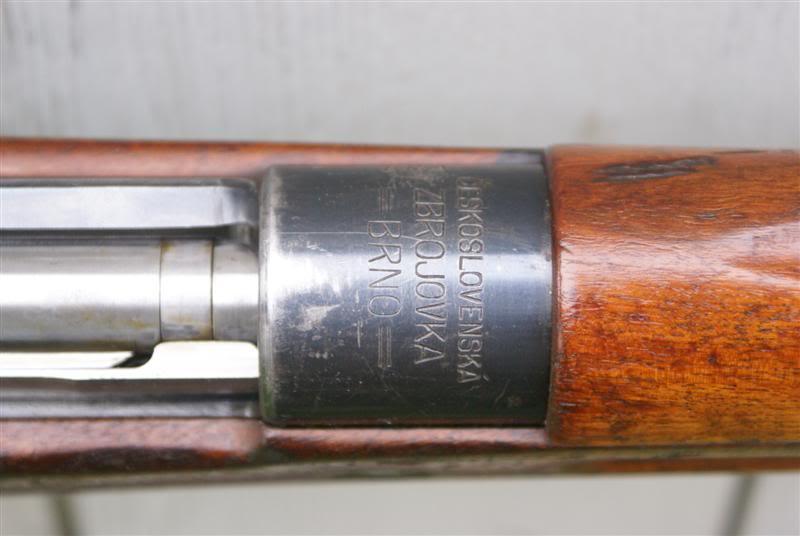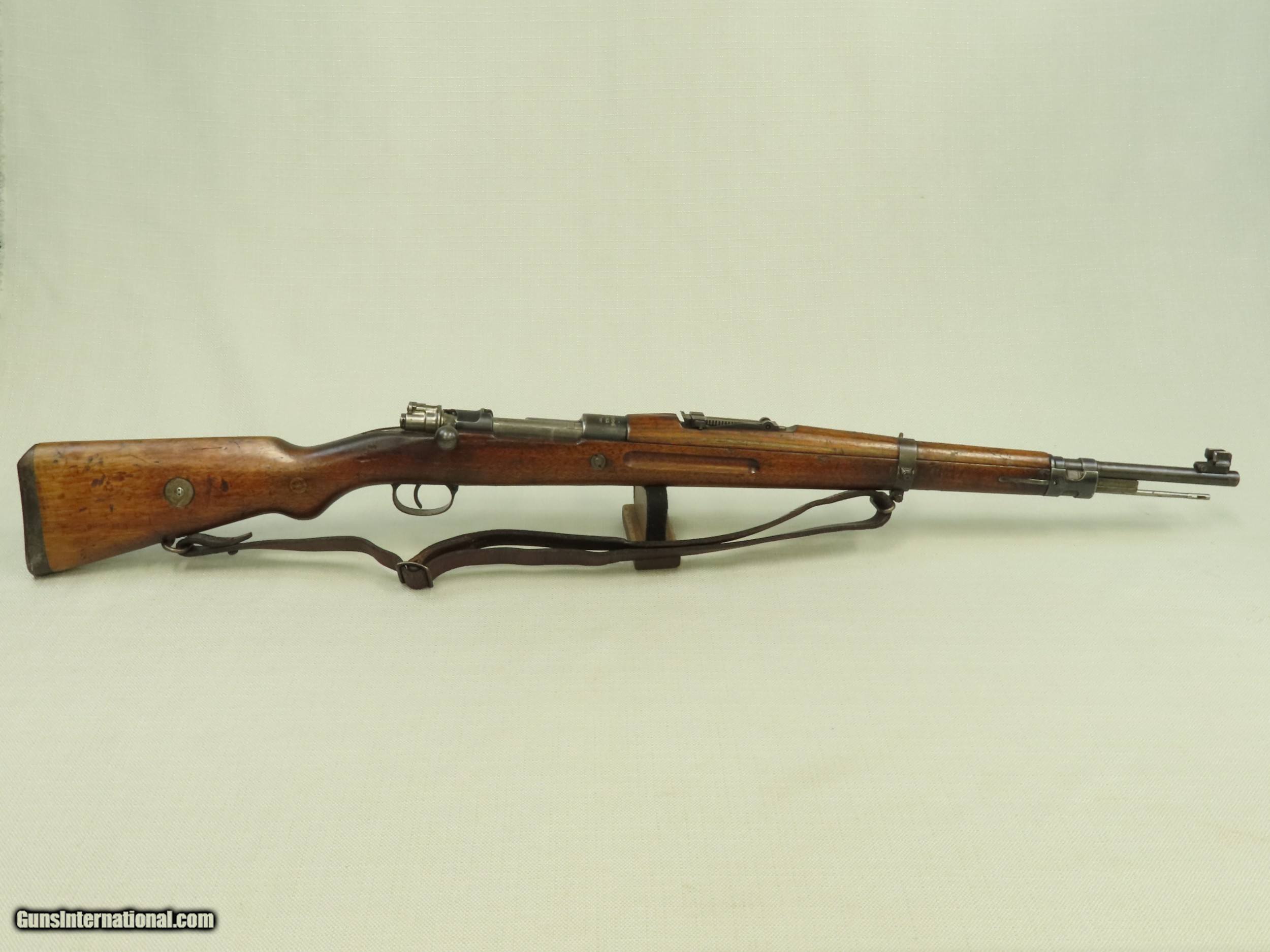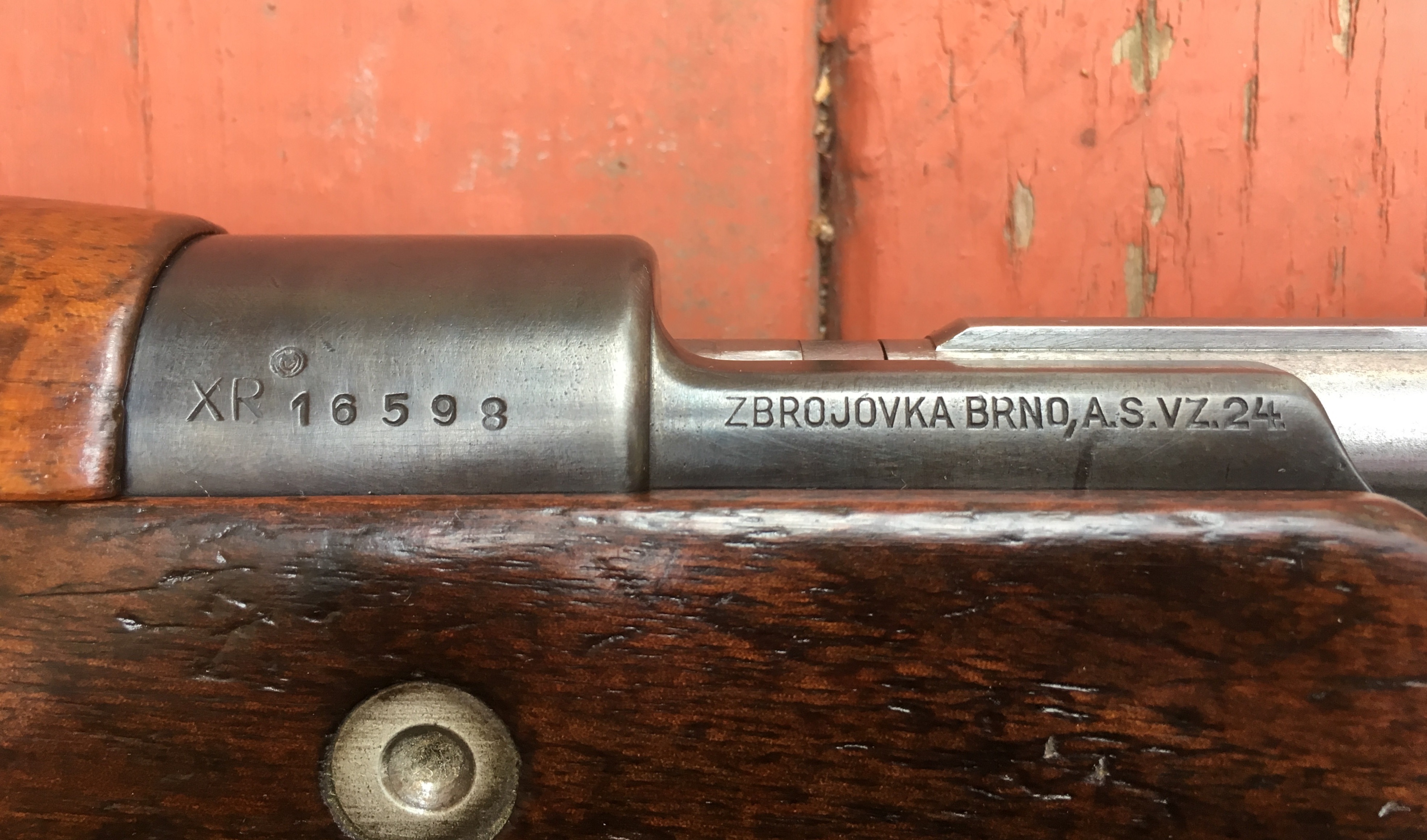Vz24 Mauser Serial Numbers
On this page I have outlined the various VZ24 and VZ33 pattern bayonets available to the collector and have used my own collection and photographs from other collectors to illustrate the variations. The information below has been gleaned from books and discussions held by the BCN, any mistake, correction or additional information will be gratefully received. Many thanks to Brian Conkle for the information he provided me based on his knowledge and collection of the VZ bayonets
Czechoslovak manufactured version of the Austrian 1895, for use on the 1895 Mannlicher originally used by the Czech military. These blades can be found with both Austrian and Czech markings.
- The VZ 24 Mauser was a bolt-action carbine designed and produced in Czechoslovakia from 1924 to 1942. In Caliber: 8m/m Mauser. The VZ 24 was developed from the German Mauser Gewehr 98. The VZ 24 is considered to be the best quality of all the Mauser rifle series.
- Czech Vz24 Mauser Serial Numbers Dell's tried and tested U2718Q is a feature-laden monitor that supports HDR content playback. It's still, unfortunately, missing a USB-C port, but it does have a USB 3.0 hub, HDMI, DisplayPort, mini DisplayPort, and a 3.5mm audio jack.
- Brno arms vz24 8mm mauser rifle description: description: make - brno arms; model - vz24; finish - blued; barrel - 23 1/8' caliber - 8mm mauser; capacity - n/a; grips - wood; condition - very good; store hours 10am - 6 pm mon - sat est. Please call us at (478-257-6655) if you hit the buy now button there will be (no credit card fees or shipping.
CZ Ceska Zbrojovka VZ24 8mm Mauser caliber rifle. Czech contract rifle manufactured for foreign militaries. Manufactured in 1937. Serial numbers are matching except. It was developed from the Mauser Gewehr 9. The rifle was designed in Czechoslovakia shortly after World War I. Sold For: $1,280.00 LSB#: 160901RH01 Make: Ceskoslovenska Zbrojovka, A.S. (Czechoslovakian Arms Factory Ltd.) located in Brno, Czechoslovakia Model: VZ 24 Serial Number: 8786A3 Year of Manufacture: 1924-1942 Caliber: 8mm Mauser (7.92x57mm) Action Type: Bolt Action, Internal Magazine Markings: There is no visible import mark.The top of the receiver is marked “CESKOSLOVENSKA / ZBROJOVKA.
VZ23
With the increase in the prominence of the Czech arms industry the VZ23 bayonet was made for export with it's Mauser rifle. Made with the Blade edge upwards as per the Austrian pattern these blades can also be found with a more normal edge down blade. During WWII the Germans used large numbers of Czech blades and removed the muzzle rings, as per standard German practice - the very long hilt groove proving to give sufficient support for the mounted weapon. A shorter version of the 23 can be found with a length of 384mm as opposed to the 540mm of the long blade version. Collectors call the two versions the VZ23 Long and VZ23 short respectively. Some refer to the short as the 98/22, but I have taken this as the designation of the Mannlicher bayonet.
It is thought that the 23 was primarily for export and was used on the VZ23 rifle, the short being used on the 98/22 rifle.
VZ24
The 24 was the standard issue blade for the Czech army, it has a total length of 430mm and the reversed blade edge, these were made for the VZ24 rifle. Large numbers of these blades were captured by the Germans at the beginning of WWII and these had their muzzle rings removed, to varying degrees - some have large ears remaining from the only partial removal of the ring.
The Belgian FN company had links with the Czech BRNO company and produced an almost identical rifle an blade for export. It is thought that when necessary the Czech's supplied the Belgians with weapons to help complete orders, even though they were in direct competition for the same contracts. This further complicates the identification of users etc. As it may be that Czech blades will turn up that were used by countries that were not supplied with Czech weapons officially. Belgian blades do not have the CSZ or Circle Z markings.
GUNBEAR on one of the bayonet forums has indicated that the following years are readily available 1924, 25, 26, 27, 36, 38, & 39, with the intervening years being difficult to get hold of, either through a lack of production or very low production numbers, it is reported that these years may be available in Slovakia itself. My idea would be that Czechoslovakia only came into being after WWI so there would have been a lot of early production to build up supplies, after this production would be slow or non existent, remember the late 20's saw the great depression, which lasted well into the 30's - part of the reason Hitler came to power - it would only be in the late 30's as Germany was seen as a threat that production would be restarted to refill warehouses or increase the size of the army, this may well account for the non availability of some years.
MARKINGS
Czech manufactured models are stamped with a ricasso mark CSZ over a letter. Czech issued blades are typically marked with a stamp consisting of 'letter number LION STAMP number number', details of Czech markings are on a separate page to allow adequate cover without making this page too large.
Export versions of the bayonet were typically marked with a Z in a CIRCLE marking, one circle Z is for Zbrojovka Brno , plant Brno in Protektorat Boehmen und Maehren, two circles is for plant II of Zbrojovka Brno which was was located in northwest Slovakia - Povazska Bystrica.It is however it is possible to find exported blades with CSZ stamps and for Czech blades to be found with the Circled Z mark. This was probably due to the requirements to meet export orders, i.e. Czech bound blades were taken out of production to fulfil export orders and then replaced with export aimed blades. This can make it somewhat confusing, additional problems come from the fact that many countries did not mark the exported blades with identifiable marks to indicate the end user.
Rumania used large numbers of the VZ24, and these are marked with various CM markings, i.e. the C over a curved M in a circle, the M in a larger C, C over straight M , etc. It is possible to find blades and scabbards showing both stampings. Brian Conkle has allowed me to post his page on Rumanian markings here.
Double horse head ricasso marked specimens are believed to be made by Cugir of Rumania for their own use. Cugir had a long tradition in weapons manufacture (since the end of the 18th century). During WW II Cugir arsenal was named 'Uzinele Metalurgice Copsa Mica-Cugir' (in Romanian language), which can be translated as 'The Metallurgic Plants Copsa Mica-Cugir (Information on Cugir via Liviu Stoica)
During German Occupation the Germans supplied the puppet Slovak government with Czech made bayonets, these are marked with a mark similar to the Czech marking but using a stamp with 3 hills with a cross on it, later versions do not have the numbers either side of this stamp. Most of these bayonets also have the Rumanian CM marking.
The Germans took over production of the VZ24 bayonet during WWII, and the markings changed:
WaA only. The first production blades after the occupation were marked with a WaA stamp on the one ricasso and the circle z on the other
WaA Inspection markings - (thanks to Brian Conkle)

Brno: (with M/R) single circle/Z with Eagle/WaA63; (no M/R) dot with small size Eagle/63 (end of production for Germany in 1943)
Bystrica: (with M/R) double circle with Eagle/607; (no M/R) double circle/Z with Eagle/A80 (circa 1941 and possibly a little later)
All scabbards: (M/R bayonets and a few A80's) large size Eagle/WaA63; (A80's) medium size Eagle/63 or blank; (German 'dot42/43') small size Eagle/63.
945this mark was initially used on Czech produced blades with the 945 indicating the BRNO factory. Blade was produced without the muzzle ring. Production started at the end of 1940
DOT marked blades can be found with 42 and 43 date stamps on the spine of the blade. These form the predominant VZ24 blades made by the Germans, blades were produced either blued or in the white, and typically without muzzle rings. Ringed DOT blades can be found these were made for a Rumanian export contract. There are rumours of 41 dated blades but these are unconfirmed.
After the war production was resumed and the markings changed to tgf, these can be found with dates of 46,48 and 50. The 50 dated blades were the final VZ24's produced and were made under the Russian occupation period, the Lion being replaced with crossed swords.
Between 1933 to 1938 30,000 bayonets were made for the use of the Financial guards and Police units. This blade was for a carbine and uses a different mounting system from the VZ24 and has a smaller pommel and blade (355mm long with 228 blade). This are all marked CÉTN for police. There are versions of this blade available without the muzzle ring, converted by the Germans, since the smaller mounting would not be adequate for 'use' these are thought to be used as 'dress' blades or hangers, and not as a military weapon.
NOTES
Many of these blades have been refinished during their life, either by the Germans during the war (during ring removal), or post war to clean up for sale. Blades can be found Blued, White, Shot blasted or phosphated. Pristine looking blades may have been refinished for sale and not original manufacture. It is not my intention to cover the minutia of these blades, but give a good basic grounding on the blades.
The Turkish took many of these blades and used them both on the original Czech Mauser and later modified them to suit the 1935 pattern Turkish rifle. I have included both variations below, as well as Czech, Rumanian,Slovak and blades made/converted during the German occupation. I have not got any export blades that I have provenance for so have not included any other countries. A modified hilt version of the VZ24 with a long VZ23 style blade with a 'normal' cutting edge was used by Iran, who purchased VZ24's between 1930 to 1934 to fit the 98/29 export rifle.
There are many slight variations to these blades, which unfortunately are difficult to identify due to the lack of markings. I have one that is tentatively identified as Peruvian, and another unknown variation, probably for another South American country. A third has a stylised Swan imprinted on the hilt
Israel used these blades during the 1949 war and after
1895 with OEWG and unknown ricasso mark Unknown ricasso marking Austrian OEWG marks on opposite ricasso Czech acceptance marks on pommel |
Austrian 1895 with Czech markings |
Austrian 1895 NCO model Issued to Czech unit Pommel Marking shows 3 Cavalry issue (3J) pre 1936 |
Original Austrian makers mark Added Czech marking on opposite ricasso of S Lion 8 for an Oppava based infantry unit |
VZ23 short, with blade edge in reversed configuration Blade ricasso marked CSZ, scabbard frog stud F XXXXX, the scabbard is not original to blade Pommel marked 00036, making this an early one in the run. I am unsure as to the end user of this blade so have left it in Czechoslovakia as the maker |
1923 marked VZ24 bayonet Circled lion mark on VZ24 |
VZ 24 |
Scabbard and hilt markings on Export VZ |
VZ24 with markings showing manufacture by BRNO (tgf) under Russian control (crossed swords) in 1950 |
Heavily blued post war manufactured VZ24 marked E3 46 |
Marking on tang and not ricasso as pre war models |
CSV over E on blade ricasso |
Z1 30 scabbard frog markings of pre war scabbard |
VZ24 Variation, probably for a South American country Has slightly different pommel and muzzle ring shapes |
N block CSZ marking |
Comparison of standard VZ24 (top) to variation |
1924 dated VZ24 |
1924 date on Ricasso |
8HN unit pommel marks |
VZ33 in white, rather than the German reworked blued finish. The S in the CSZ on the ricasso has been struck out, was this done by the Czechs or the Germans. Tang and frog stud are marked E Lion 35 |
VZ33 with CÉTN markings |
Pommel CÉTN markings |
| ||||
| VZ24 without pommel rifle mounts, came in a FS marked scabbard |
CZ24 made under German occupation WaA63 marks only WaA63 stamp on frog stud WaA on tang as well, note dark black grips |
WaA 607 marked blade showing Bystrica production around 1941 WaA 607 ricasso stamp, opposite face shows the Circled Z Czech marking Pommel marking 7.S, meaning of this is currently unknown |
VZ24 manufactured under German occupation, blade is Circle Z marked on one ricasso and has the German WaA stamp A80 on the other WaA stamp A80 predates 945 and DOT coded German made VZ's |
VZ33 de-ringed by Germans in WWII VZ33 markings Pommel marks |
WaA stamped VZ24 courtesy of Brian Conkle circa 1940. |
Close up of WaA ricasso stamp Eagle 607. |
VZ 24 made under German occupation by BRNO factory, marked with 945 manufacturer code on ricasso |
VZ24 manufactured under German occupation, blade is Circle Z marked on one ricasso and has the German WaA stamp A80 on the other |
VZ24 DOT 42 coded with blued blade DOT 42 scabbard marks |
DOT42 coded VZ24 with blade in white WAa stamp on scabbard stud |
VZ 24 DOT 43 coded, with muzzle ring Rumanian export contract DOT markings and muzzle ring. |
VZ24 de Ringed leaving very high 'ears' Ricasso markings on VZ24, crossguard has circled z marking |
VZ24 Ricasso marks and scabbard with German style side screw. |
Fighting knife made from a cut down czechVZ24, came in early pre 1940 production 84/98 scabbard with 1940 marked frog comparison of fighter with full length un modified bayonet Interestingly the scabbard is only marked with a serial number on the back face for the throat 1940 dated frog |
| VZ24 without pommel rifle mounts, came in a FS marked scabbard |

Czechoslovak VZ24 with Israeli army acceptance marks on crossguard and frog stud. Israel bought large numbers of weapons from Czechoslovakia during the original 1949 war of independence |
22/98 Early Persian contract used ex Czech blades with markings deleted Makers marks left intact Czech pommel stamps not removed but you can just see the Persian Crest lightly over striking the 14P Czech mark Original L frog stud has been removed and French style strap added. I have another blade with the scabbard having original Czech marks struck out on the L shaped frog I am unsure as to the relevance of the tang marks and as to whether they are Czech or Persian |
Persian 98/22 Scabbard is ex Czech VZ23 which indicates this bayonet is one of the first contract blades |
98-22 for Persia Pommel Markings |
Same size as a VZ24 but with larger pommel and normal edge down blade
Modifications to tang and grips Probably due to damage and subsequent re shaping
modified grips and serial on the frog stud, which is the only marking
Mauser Vz24 Rifle
Summary of Rumanian markings, supplied by Brian Conkle |
Czech VZ24 |
Rumanian markings on Czechoslovakian VZ24 bayonet |
Czech VZ24 with double horse head ricasso stamp |
Slovak issue VZ24 with shot blasted finish to blade Slovak Mountain stamp without dates and Rumanian marks on tang Bayonet supplied to puppet Slovakia government during German occupation in WWII detail of scabbard markings - only distinguishing feature |
1926 the obtained 98/22 rifles and bayonets further blades with VZ24 handles on VZ23 blades were obtained in 1936 these are undated | |
Modified Czech 1895,crossguard has been modified Markings and modified crossguard detail | |
Czech VZ23 unmodified Ricasso marks on VZ23 | |
Czech Vz24 Mauser Serial Numbers

Vz24 Mauser Serial Numbers
VZ24 Variation, probably for a South American country Has slightly different pommel and muzzle ring shapes
N block CSZ marking
Comparison of standard VZ24 (top) to variation
T block VZ24 with oversize grips Serial under Pommel and along tang, and oversize grips Swan (?) mark on hilt of VZ24 |